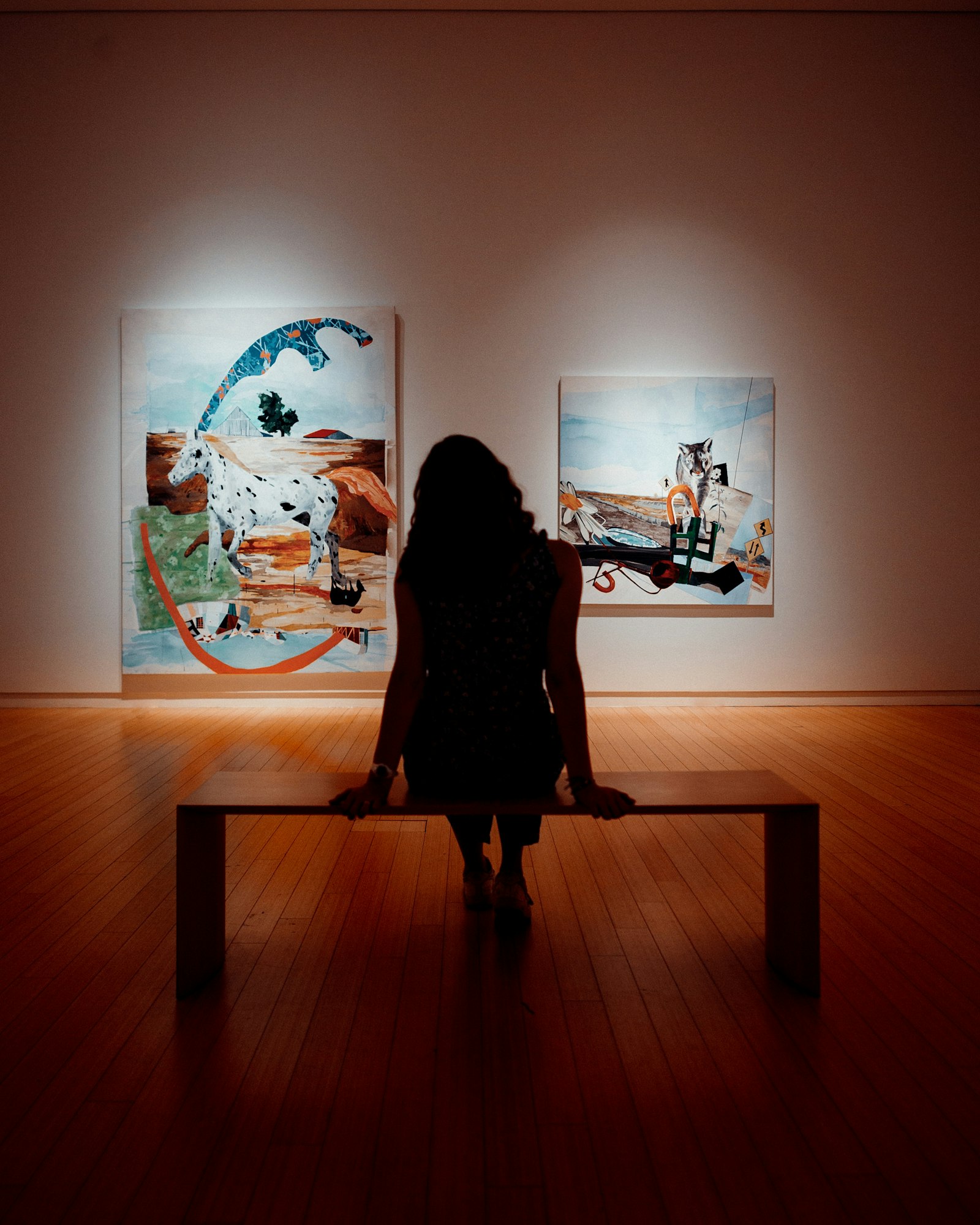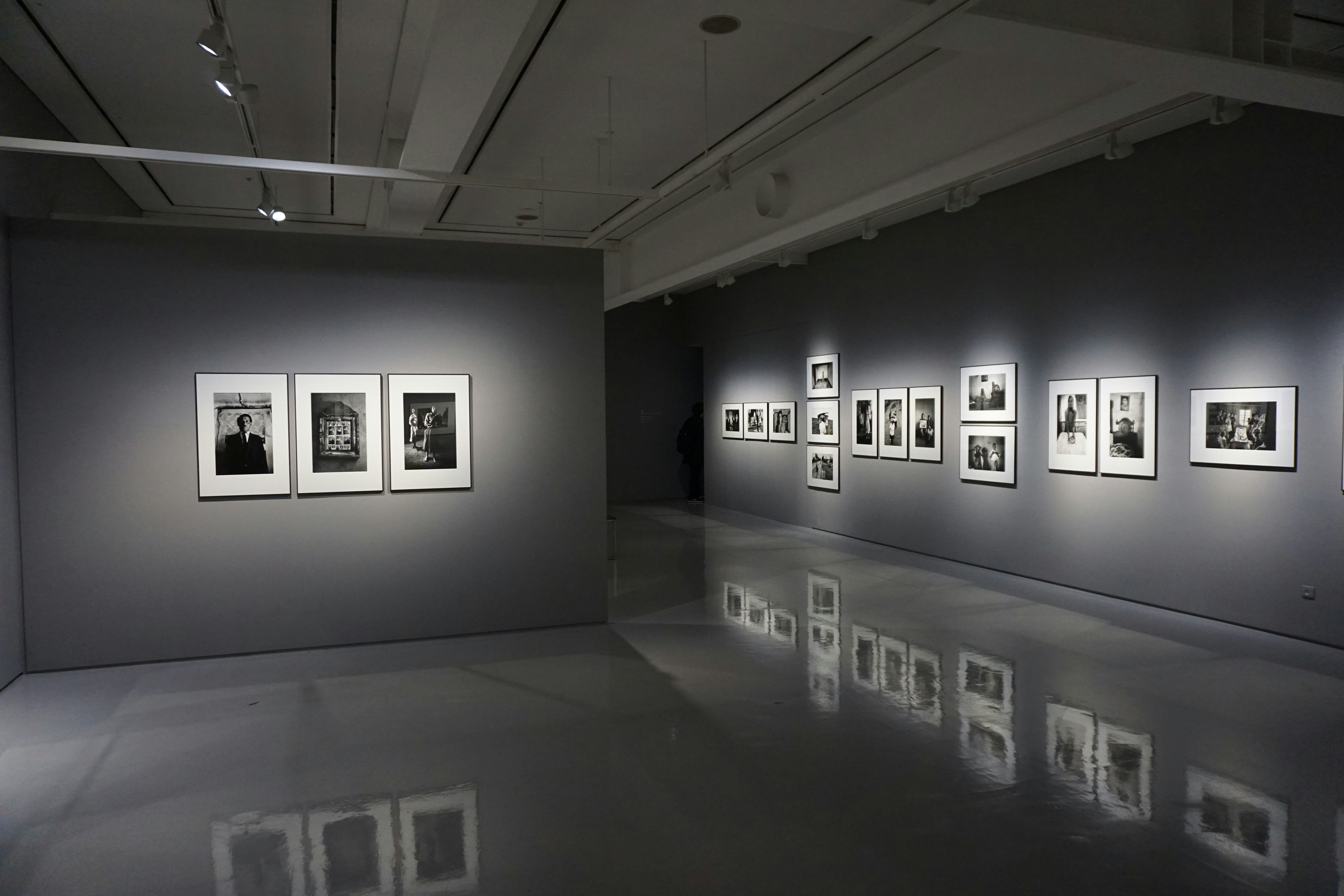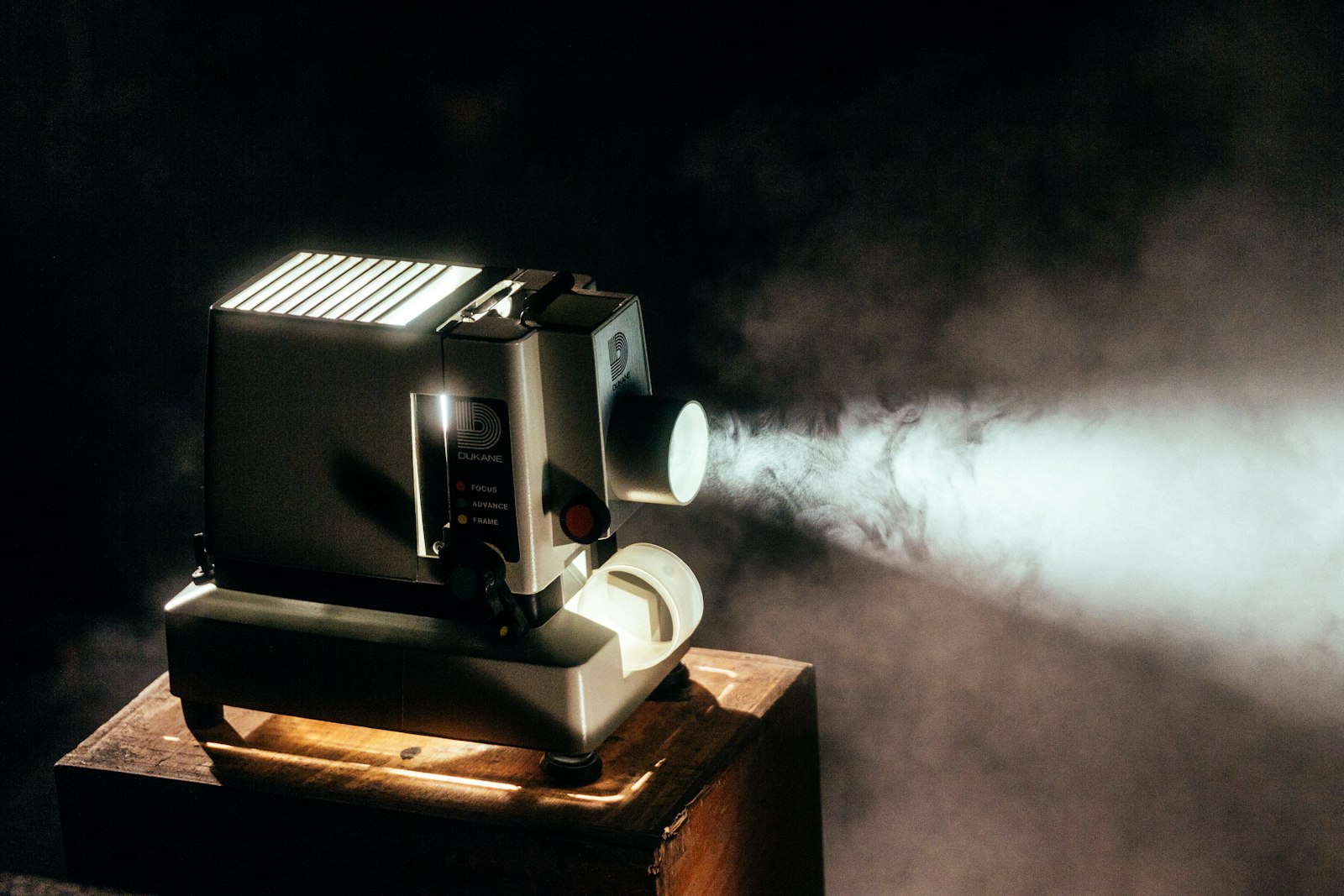Contemporary Art Understanding: Approaches to Appreciating Today's Art
Malik Mohsin Saleem Khan
February 10, 2024 · 16 min read

Introduction
Contemporary art often elicits strong reactions—fascination and confusion, admiration and dismissal, profound connection and utter bewilderment. For many, the world of contemporary art can seem deliberately obscure, with its conceptual frameworks, unconventional materials, and sometimes minimal visual information challenging traditional expectations of what art "should" be. Yet contemporary art offers unique insights into our current moment, addressing pressing social questions, exploring new technological possibilities, and expanding the boundaries of creative expression in ways that can be deeply rewarding when approached with appropriate context.
This comprehensive guide explores approaches to understanding and appreciating contemporary art that go beyond simplistic reactions of "I could do that" or "but is it art?" Drawing from art historical context, critical frameworks, and practical viewing strategies, discover how to engage meaningfully with contemporary art across its diverse manifestations. Whether you're a curious newcomer intimidated by contemporary art spaces or someone seeking to deepen your existing appreciation, these insights will help transform potential confusion into rewarding engagement with one of our era's most vital cultural forms.
Understanding Contemporary Art: Context and Evolution
Contemporary art emerges from specific historical developments and operates within particular conceptual frameworks. Understanding this context provides essential foundation for engaging with works that might otherwise seem deliberately obscure or provocatively simplistic.
Defining contemporary art involves both temporal and conceptual dimensions that distinguish it from modern art and other historical categories. Temporally, "contemporary art" generally refers to work created from the 1970s or 1980s to the present, though some institutions use the post-World War II period as a starting point. More importantly, contemporary art reflects specific conceptual shifts: movement beyond modernism's focus on formal innovation and medium specificity; engagement with postmodern questioning of grand narratives and universal truths; incorporation of diverse cultural perspectives beyond Western traditions; and response to globalization, digital technology, and other defining aspects of our current era. These characteristics create a category defined less by unified style than by shared historical context and conceptual concerns.
The historical evolution from modern to contemporary art involved several pivotal developments that continue influencing current practices. Conceptual art's emergence in the 1960s-70s established the primacy of ideas over traditional aesthetics or technical skill, fundamentally changing what constituted artistic practice. Postmodernism's critique of originality and authenticity led to appropriation strategies, quotation of historical styles, and questioning of artistic authorship. Expanded definitions of artistic media incorporated performance, installation, video, digital technologies, and everyday objects beyond traditional categories like painting and sculpture. Identity-based practices addressing race, gender, sexuality, and other aspects of social experience gained prominence, challenging universal or neutral conceptions of artistic meaning. These developments collectively transformed both artistic production and the frameworks for understanding it, creating the conditions for contemporary art's distinctive approaches.
Contemporary art's institutional context significantly shapes both its creation and reception. The global network of museums, galleries, biennials, art fairs, and educational institutions constitutes not just venues for displaying art but active participants in determining what art gains visibility and validation. Commercial galleries represent artists and sell their work while often providing crucial early exhibition opportunities. Public and private museums collect, preserve, and contextualize contemporary art while conferring institutional legitimacy. Biennials and international exhibitions showcase current developments while often emphasizing particular curatorial themes or perspectives. Art schools and universities train artists while developing theoretical frameworks for understanding contemporary practices. Critics and art publications interpret works and establish evaluative criteria. This complex ecosystem influences what art gets made, seen, and valued, creating multiple gatekeeping functions that affect which artists and approaches gain recognition.
The global expansion of contemporary art beyond Western centers represents one of its most significant developments. While Euro-American institutions historically dominated art world discourse, recent decades have seen meaningful (if still incomplete) diversification through several mechanisms. Artists from previously marginalized regions have gained international recognition, bringing distinctive perspectives shaped by different cultural traditions and historical experiences. Institutions dedicated to non-Western art have developed in regions from East Asia to Latin America to the Middle East, creating alternative centers of artistic production and discourse. Curators and critics from diverse backgrounds have introduced new interpretive frameworks challenging Western-centric art historical narratives. This globalization creates both richer artistic dialogue and new tensions around cultural appropriation, market dynamics, and the potential homogenization of artistic practices through international art world mechanisms.
Key Approaches in Contemporary Art
Contemporary art encompasses diverse approaches rather than a unified style or movement. Understanding these major tendencies provides orientation for recognizing the different strategies artists employ to create meaning and engage viewers.
Conceptual approaches prioritize ideas over traditional aesthetic qualities or technical virtuosity, continuing the legacy of 1960s-70s conceptual art while developing new manifestations. These practices often emphasize art's capacity to raise questions, challenge assumptions, and create intellectual engagement rather than primarily visual or emotional experiences. Documentation of processes or actions may constitute the artwork itself rather than producing conventional objects. Language frequently appears as both subject and material, exploring how meaning is constructed and communicated. Everyday objects and actions may be reframed as art through context and conceptual framing rather than physical transformation. These approaches require viewers to engage actively with the ideas and propositions underlying visual presentations, often providing intellectual rewards that complement or replace traditional aesthetic pleasures.
"The idea becomes a machine that makes the art." — Sol LeWitt, conceptual artist
Identity and social engagement have become central concerns for many contemporary artists addressing how art relates to political, social, and cultural realities. Artists exploring identity examine how factors including race, gender, sexuality, nationality, and class shape both personal experience and social structures, often drawing from their own positions while connecting to broader systemic issues. Socially engaged practices may involve direct community participation, activist interventions, or institutional critique examining art world power dynamics. Documentary approaches record and interpret social conditions through photography, video, and other media while questioning documentary's claims to objectivity. These practices often challenge the notion of art as autonomous from social concerns, instead positioning creative work as directly engaged with pressing issues from environmental crisis to economic inequality to historical injustice.
Material and formal experimentation continues as a vital dimension of contemporary practice, though often with different emphases than modernist exploration of medium specificity. Installation art creates immersive environments engaging multiple senses and requiring physical navigation rather than frontal viewing, transforming spectatorship into embodied experience. New media practices incorporate digital technologies, artificial intelligence, virtual reality, and other emerging tools, exploring both their aesthetic possibilities and their social implications. Performance art uses the artist's body and actions as primary material, creating time-based works that may be experienced directly or through documentation. These material explorations often combine formal innovation with conceptual or social concerns rather than pursuing form for its own sake, reflecting contemporary art's tendency toward integrating multiple approaches rather than maintaining strict boundaries between them.
Appropriation and recontextualization strategies engage existing cultural material rather than creating wholly original content. Artists may directly incorporate images from mass media, advertising, or art history, transforming their meaning through new contexts or juxtapositions. Found objects and everyday materials become artistic media through selection and presentation rather than traditional crafting. Historical styles and techniques may be deliberately quoted or mimicked with critical or ironic distance rather than straightforward revival. These approaches reflect postmodern questioning of originality and authenticity while acknowledging art's creation within media-saturated environments where images constantly circulate and recombine. Rather than claiming to create from nothing, these practices engage explicitly with cultural inheritance and contemporary visual environments through strategies of selection, recombination, and reframing.
Interpreting Contemporary Art: Frameworks and Strategies
Approaching contemporary art with appropriate interpretive frameworks transforms potentially bewildering encounters into meaningful engagement. These strategies help navigate works that often deliberately resist immediate understanding or conventional aesthetic appreciation.
Contextual information provides essential foundation for interpreting works that may seem inscrutable without appropriate background. Artist statements and interviews offer direct insight into intentions, concerns, and processes, though they represent starting points rather than definitive interpretations. Exhibition texts including wall labels, catalogs, and curatorial statements provide institutional framing that situates individual works within broader contexts and themes. Critical reviews and scholarly analyses offer multiple perspectives on possible meanings and significance, demonstrating how works generate diverse interpretations rather than single correct readings. This contextual material helps bridge the gap between initial visual encounter and deeper understanding, particularly for conceptually-driven works where visual information alone may provide limited access to artistic meaning.
Formal analysis remains valuable for contemporary art despite the shift away from purely formal concerns that characterized high modernism. Visual elements including composition, color, scale, and material qualities continue creating meaning and affect even in conceptually-oriented works. Spatial relationships in installation art shape how viewers physically experience and move through environments. Temporal dimensions in time-based media like video and performance require attention to rhythm, duration, and sequence. Technical choices from camera angles to fabrication methods influence both meaning and viewer experience. While rarely sufficient alone for understanding contemporary work, these formal considerations provide important dimensions of artistic communication that complement conceptual frameworks and thematic concerns.
- Visual elements: Consider how composition, color, scale, and material qualities contribute to the work's impact and meaning
- Spatial dynamics: For installation and three-dimensional work, examine how physical arrangement shapes viewer experience
- Technical choices: Note how production methods, from handcraft to digital processing, affect both aesthetics and conceptual implications
- Temporal aspects: For time-based work, consider pacing, duration, and how the piece unfolds over time
Critical frameworks from contemporary theory provide analytical tools for engaging with art's relationship to broader cultural, social, and philosophical questions. Postcolonial perspectives examine how works address cultural identity, historical power dynamics, and the legacy of colonialism. Feminist and queer theory approaches analyze gender representation, sexuality, and challenges to normative categories. Institutional critique examines how works engage with art world structures, market dynamics, and cultural legitimation processes. Media theory frameworks address how art responds to technological change, information systems, and image circulation in digital environments. While these theoretical approaches sometimes employ specialized vocabulary that can seem exclusionary, their core insights offer valuable perspectives for understanding how contemporary art engages with significant cultural questions.
Personal response and subjective engagement remain essential despite contemporary art's often conceptual or theoretical dimensions. Emotional reactions—whether confusion, fascination, discomfort, or pleasure—provide important starting points for deeper engagement rather than responses to be dismissed as naive or irrelevant. Associations from personal experience create individualized connections with works that may differ from canonical interpretations while remaining valid entry points. Questions and uncertainties can be productive rather than obstacles, as contemporary art often deliberately creates ambiguity or multiple interpretive possibilities rather than fixed meanings. This subjective dimension acknowledges that art operates not just intellectually but through embodied, emotional, and personal experiences that vary between viewers while remaining central to artistic engagement.
Engaging with Contemporary Art in Practice
Beyond theoretical understanding, practical approaches to experiencing contemporary art can transform potentially intimidating encounters into rewarding engagement. These strategies help navigate both physical art spaces and the sometimes challenging works they contain.
Museum and gallery navigation involves both practical considerations and viewing approaches that enhance engagement with contemporary art. Pacing significantly affects experience quality—allowing sufficient time with individual works rather than attempting to see everything prevents the fatigue and diminished attention that undermines meaningful engagement. Selective focus on works that initially attract interest or curiosity, rather than feeling obligated to give equal attention to everything, creates more rewarding experiences while acknowledging limited time and attention capacity. Reading available information including wall texts and exhibition introductions provides valuable context without necessarily accepting institutional framing as definitive. Documentation through notes, sketches, or photographs (where permitted) supports later reflection and research extending beyond the immediate viewing experience. These practical approaches acknowledge that meaningful art engagement requires active strategies rather than passive consumption.
Challenging work often provokes dismissive initial reactions that can be transformed through more sustained engagement. When encountering work that seems deliberately provocative, considering what specific boundaries it challenges and why those boundaries might merit questioning creates more productive engagement than simple offense or dismissal. For conceptually complex pieces, identifying the central questions or issues being explored, even if the artist's specific position remains ambiguous, provides entry points beyond immediate visual appeal. With formally minimal or visually sparse works, attending to subtle details, materials, and spatial relationships often reveals richness not apparent in cursory viewing. These approaches replace "I don't get it" reactions with more specific and productive questions about particular aspects of challenging work.
Digital engagement with contemporary art has expanded significantly, creating both new access points and distinctive viewing experiences. Virtual exhibitions range from simple documentation to sophisticated 3D environments, providing access to geographically distant shows while raising questions about how digital mediation affects art experience. Artist websites and social media offer direct connections to artists' work and thinking outside institutional framing, though often with less contextual information than curated presentations. Online collections from major institutions provide unprecedented access to contemporary art with extensive supporting materials, enabling self-directed exploration and research. Digital-native art forms including net art, virtual reality works, and blockchain-based pieces require specific platforms and technical access rather than physical presence. These digital engagement modes complement rather than replace in-person experiences, offering different affordances and limitations that expand overall contemporary art access.
Developing personal connection with contemporary art involves approaches that build meaningful relationships with works beyond intellectual understanding alone. Regular exposure through repeated visits to local institutions or consistent online engagement builds familiarity with contemporary approaches that initially seem foreign or challenging. Following specific artists' development over time creates deeper understanding of individual practices and the contexts shaping them. Connecting art to personal interests and concerns—whether social issues, technological developments, or philosophical questions—establishes relevance beyond abstract appreciation. Discussion with others, whether friends, organized groups, or online communities, provides multiple perspectives while articulating and refining personal responses. These approaches transform contemporary art from an intimidating specialized domain to a living cultural form with personal significance and ongoing relevance.
Experiencing Contemporary Art: A Practical Guide
Translating conceptual understanding into actual engagement with contemporary art involves specific approaches that help navigate both physical spaces and the works they contain. These practical strategies support meaningful experiences regardless of prior art background.
- Prepare for more rewarding art experiences: Set the stage for meaningful engagement:
- Research basic information about exhibitions or artists before visiting when possible
- Consider timing visits during less crowded periods for more contemplative viewing
- Set realistic expectations about attention span and plan accordingly (shorter, focused visits often prove more rewarding than exhaustive marathons)
- Approach with curiosity rather than judgment, preparing to ask questions rather than immediately evaluate
- Develop effective viewing strategies: Implement approaches that enhance engagement:
- Spend extended time with fewer works rather than briefly scanning many pieces
- Look before reading—form initial impressions before consulting explanatory texts
- Return to works after reading contextual information to see how understanding changes perception
- Consider multiple perspectives—how the work appears from different physical positions and conceptual viewpoints
- Engage actively rather than passively: Participate in creating meaning rather than expecting immediate delivery:
- Ask specific questions about materials, techniques, references, and possible meanings
- Note personal associations and reactions, whether intellectual, emotional, or physical
- Consider how the work relates to its physical space and other pieces in the exhibition
- Sketch, write notes, or otherwise document your observations and questions
- Utilize available resources appropriately: Take advantage of interpretive materials without becoming dependent:
- Read curatorial statements for exhibition themes and frameworks
- Use audio guides or guided tours for additional context when available
- Ask questions of gallery attendants, who often possess significant knowledge
- Follow up on interesting works through further research after your visit
- Build ongoing engagement with contemporary art: Develop sustained connection beyond individual visits:
- Follow institutions and artists of interest through websites and social media
- Explore online collections and digital exhibitions between physical visits
- Join public programs including artist talks, workshops, and discussion groups
- Consider membership at local institutions to encourage regular engagement
Different contemporary art venues offer distinctive experiences requiring specific approaches. Major museums typically present carefully curated exhibitions with extensive contextual materials, creating accessible entry points while sometimes emphasizing already-established artists and perspectives. Commercial galleries show work available for purchase in less didactic environments, offering opportunities to see emerging artists and current market trends while potentially providing more direct engagement with gallery staff knowledgeable about the work. Artist-run spaces and alternative venues often present experimental work outside commercial pressures, typically with less explanatory material but more direct connection to artistic communities. Biennials and international exhibitions showcase global developments through curatorial frameworks addressing specific themes or questions, requiring navigation of both individual works and overarching conceptual structures. Understanding these different contexts helps adjust expectations and strategies appropriately for each environment.
Overcoming common obstacles to contemporary art appreciation involves addressing specific challenges rather than general resistance or dismissal. For conceptually complex work, focus initially on identifying the central questions or issues being explored rather than expecting immediate comprehension of all aspects. When encountering minimal or visually sparse work, adjust viewing pace to allow perception of subtle details and relationships that reveal themselves gradually rather than immediately. For provocative or challenging content, consider what specific boundaries are being questioned and why before forming judgment based on initial reactions. With unfamiliar materials or technologies, learn about their properties and cultural associations to understand why the artist might have selected them. These targeted approaches address specific barriers to appreciation rather than reinforcing general perceptions of contemporary art as deliberately obscure or elitist.
Emerging Directions in Contemporary Art
Contemporary art continues evolving in response to technological developments, social changes, and shifting cultural contexts. Understanding these emerging directions provides perspective on where this dynamic field may be heading.
Digital transformation continues reshaping contemporary art through multiple dimensions. Artificial intelligence has moved from theoretical interest to active artistic tool, with artists exploring both AI-assisted creation and critical examination of algorithmic systems and their social implications. Virtual and augmented reality technologies enable immersive experiences beyond physical constraints, creating new possibilities for spatial, embodied art experiences. Blockchain technologies have generated both new market mechanisms through NFTs (non-fungible tokens) and conceptual exploration of ownership, authenticity, and value in digital contexts. These technological developments raise fundamental questions about authorship, materiality, access, and preservation that contemporary art institutions and practices continue negotiating, creating both exciting possibilities and significant challenges for traditional art world structures.
Social practice and activism have gained increasing prominence as artists address urgent social and political issues through work that often extends beyond traditional art contexts. Climate crisis response has generated diverse artistic approaches from visualization of scientific data to speculative future scenarios to direct environmental interventions. Decolonial practices challenge Western-centric art historical narratives and institutional structures while recovering marginalized traditions and perspectives. Community-based projects emphasize collaborative creation and local engagement rather than individual artistic expression for specialized audiences. These socially-engaged approaches often blur boundaries between art and other forms of cultural and political activity, raising questions about aesthetic autonomy while demonstrating art's potential contributions to broader social change.
Institutional evolution continues as traditional art world structures adapt to changing conditions and alternative models emerge. Major museums face increasing pressure to address historical exclusions, problematic funding sources, and limited audience diversity, leading to both substantive changes and accusations of superficial responses. Commercial galleries and art markets navigate digital disruption, global expansion, and questions about sustainability and equity in market-driven systems. Alternative spaces and artist-led initiatives continue developing models outside dominant institutional structures, often emphasizing accessibility, experimentation, and direct community engagement. These institutional developments reflect broader questions about who contemporary art serves, how it's funded and distributed, and what social functions it fulfills beyond aesthetic experience or market value.
Conclusion
Contemporary art offers unique insights into our current moment through creative expressions that engage with the complexities, contradictions, and possibilities of contemporary experience. By approaching these works with appropriate context, interpretive frameworks, and viewing strategies, what initially might seem bewildering or inaccessible can become a rich source of intellectual stimulation, emotional resonance, and expanded perspective.
The most rewarding engagement with contemporary art typically combines multiple dimensions: intellectual understanding of conceptual frameworks and historical contexts; formal appreciation of visual, material, and spatial qualities; emotional and subjective responses that connect works to personal experience; and critical consideration of the social and political questions many works address. This multifaceted approach acknowledges contemporary art's complexity while recognizing the diverse ways it creates meaning and value beyond any single interpretive framework.
Perhaps most importantly, contemporary art invites active participation in meaning-making rather than passive consumption of predetermined content. By questioning conventions, exploring new possibilities, and addressing unresolved questions, it creates spaces for viewers to engage with both artistic expression and the world it responds to in ways that can be challenging but ultimately enriching. In a cultural landscape often dominated by entertainment designed for easy consumption, contemporary art's demands for engagement, interpretation, and sometimes discomfort offer valuable opportunities for deeper thinking about both art itself and the complex realities it addresses.
Frequently Asked Questions
How can I appreciate contemporary art that seems to require specialized knowledge?
Start by distinguishing between initial confusion (which can be productive) and dismissal based on that confusion. Utilize available contextual information including exhibition texts, online resources, and when possible, guided tours that provide entry points without requiring academic art backgrounds. Focus first on your direct experience—what you notice visually, how the work makes you feel, what questions it raises—before worrying about 'correct' interpretation. Remember that even art professionals continue learning and developing their understanding; appreciation develops through repeated exposure and engagement rather than immediate comprehension. Most importantly, recognize that your personal response, even if different from institutional interpretations, represents a valid starting point for deeper engagement.
What distinguishes significant contemporary art from works that seem deliberately obscure or simplistic?
Quality assessment in contemporary art involves multiple considerations beyond immediate visual appeal or technical skill. Conceptual depth—whether the work engages substantively with meaningful ideas rather than superficial provocation—provides one important criterion. Innovation that genuinely extends artistic possibilities rather than merely recycling established approaches offers another evaluative dimension. Contextual awareness and intentionality, demonstrated through how the work engages with relevant artistic, social, or historical references, distinguishes thoughtful from arbitrary choices. Ultimately, significant work typically generates sustained critical engagement and multiple interpretive possibilities rather than exhausting its interest after initial viewing. These qualities emerge through extended engagement rather than immediate judgment.
How has the internet changed contemporary art creation and reception?
The internet has transformed contemporary art through multiple dimensions: It has democratized access to artistic knowledge previously confined to specialized institutions, enabling self-education and participation beyond traditional art centers. Social media platforms have created alternative distribution channels outside established galleries and museums, allowing artists to build audiences directly. Digital technologies have generated entirely new artistic forms including net art, virtual reality experiences, and AI-assisted creation. Global connectivity has accelerated cross-cultural influence and collaboration while raising questions about cultural appropriation and homogenization. These developments have both expanded possibilities for artistic creation and reception while creating new challenges regarding attention economics, context collapse, and the relationship between digital documentation and physical art experiences.
Malik Mohsin Saleem Khan
Founder
Author bio information


